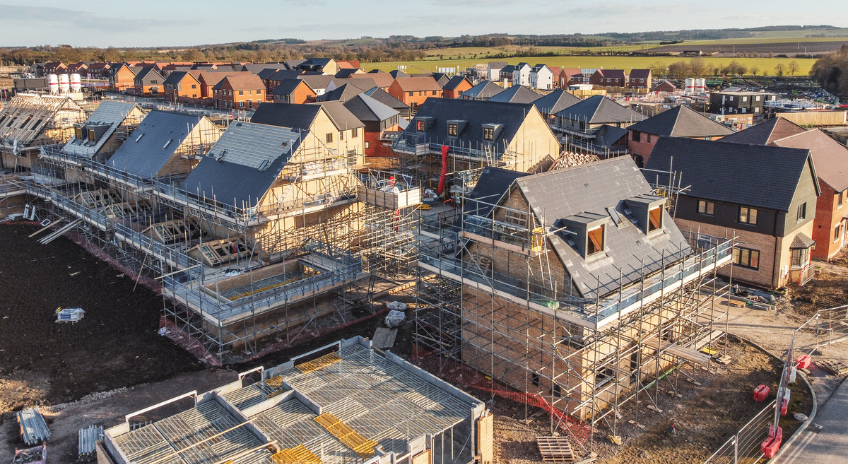
SPP Consultation 2020: The Results
Date: 12/01/2021 | COVID-19, Construction, Energy & Natural Resources, Planning, Real Estate, Residential Development
Last July, the Scottish Government opened a consultation on the continued relevance of presumption in favour of sustainable development (“Presumption”) in the 2014 Scottish Planning Policy (“SPP”).
The recent case of Gladman (covered in our article of 2 Oct 2020) indicated that any shortfall in the effective local housing land supply meant that proposals which would reduce the shortfall were almost always sustainable development. The triggering of the Presumption in such circumstances meant that housing proposals should be granted consent unless there were significant material considerations to the contrary. The Scottish Government was concerned that this interpretation could undermine the primacy of the statutory development plan, the policy framework developed by local planning authorities to guide planning decisions in their areas. The solution proposed in the consultation was to remove the Presumption from the SPP altogether.
The consultation received 244 responses and the resulting policy changes were published on Friday 18 December. These include a revised SPP, a new PAN 1/2020 on calculating housing land supplies and a Summary of Finalised Amendments. The main issues addressed by these documents were the status and wording of the Presumption and the calculation of the 5-year effective housing supply in development plans.
Presumption in Favour of Sustainable Development
Consultees were divided on the desirability and impacts of proposals to remove the Presumption from the SPP. Housing and energy developers broadly favoured retaining the Presumption while planning authorities generally sought its removal. In summary, the Scottish Government’s position is that:
- The Presumption has some influence on decisions, but this is limited and difficult to gauge. There are many different interpretations of its meaning and application.
- The Presumption aims to support sustainable development, not development at any price or in any location. The treatment of the ‘tilted balance’ in the Gladman case could lead to consent being granted for unsustainable development where there is a shortfall in the housing land supply.
- Development plans cannot include policies covering every eventuality. Although the development plan has primacy in all cases, some flexibility is needed. Absent relevant policies, the reworded Presumption should provide more clarity.
SPP Para 33 now states “Proposals that do not accord with the development plan should not be considered acceptable unless material considerations indicate otherwise. Where a proposal is for sustainable development, the presumption in favour of sustainable development is a material consideration in favour of the proposal. Whether a proposed development is sustainable development should be assessed according to the principles set out in paragraph 29” (where the principles themselves remain unchanged).
Arguably, the newly worded Presumption makes no difference to the pre-consultation approach. The original SPP wording required the development plan to be considered in the round in planning decisions. This remains the case under the new SPP wording. However, the Scottish Government’s reasoning behind the new wording does emphasise that a housing land supply shortfall should not be treated as the sole or overriding factor determining the outcome of an application.
Maintaining an effective housing land supply
The SPP requires a 5 year effective land supply to be calculated by planning authorities to identify housing land requirements. This entails annual housing land audits, the methods for which can vary between authorities. The main methods are the “residual compound method”, which takes account of past shortfalls in delivery and adds these to the future requirement calculation, and the “average” method, where the calculation is based on the average rate of housing delivery over the life of the development plan. The Scottish Government aims to bring forward a single methodology in NPF4 (due in 2022) to aid clarity and consistency.
The SPP is amended to state (at para 125): “Planning authorities, developers, service providers and other partners in housing provision should work together to ensure a continuing supply of effective land and to deliver housing, taking a flexible and realistic approach. Proposals that do not accord with the development plan should not be considered acceptable unless material considerations indicate otherwise. Where a proposal for housing development is for sustainable development and the decision-maker establishes that there is a shortfall in the housing land supply in accordance with Planning Advice Note 1/2020, the shortfall is a material consideration in favour of the proposal. Whilst the weight to be afforded to it is a matter for decision-makers to determine, the contribution of the proposal to addressing the shortfall within a five year period should be taken into account to inform this judgement. Whether a proposed development is sustainable development should be assessed according to the principles set out in paragraph 29”.
PAN 1/2020 (to which the SPP refers) states that the average method is the correct approach to take, on the basis that Covid-19, market uncertainty and economic challenges are more likely to influence housing delivery than the availability of land in the planning system. Some developers may not welcome this position as they tend to prefer the residual compound method, which can lead to more residential land allocations in development plans. Anyone with concerns about housing supply calculation methodologies are recommended to monitor and provide feedback on NPF4 proposals in due course. Until the NPF4 is finalised (or further changes are made), the amended SPP, updated PAN 1/2020 and PAN 2/2010 (guidance on affordable housing and housing land audits) apply.
Consultation Exercise and Policy Monitoring
Some controversy arose regarding the manner in which the Scottish Government carried out the consultation, centred on two main criticisms.
Firstly, that the removal of the Presumption aimed to address how housing planning applications were determined but had unintended consequences for other types of development, particularly renewable energy. The Scottish Government states in the Finalised Amendments that the Presumption is not usually a determining factor in non-housing applications and expects that the effect of the revised SPP amendments on non-housing types of development will be limited.
Secondly, consultees were concerned that there had not been sufficient assessment of the impacts of the proposed SPP changes before the consultation was published. In response, Finalised Amendments state that the Scottish Government has “given further consideration to the likely impacts of the changes, taking into account all of the views and evidence received and in light of the revised proposals. We have published new screening reports which conclude that fuller assessments are not required”. However, it has undertaken to monitor decisions to establish how the revised policy is being applied, and consider calling in applications where Ministers consider it would be necessary.
If you wish to discuss any of the issues above, please contact Jacqueline Cook.

























































































